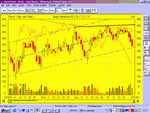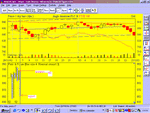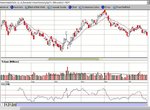FTSE Beater
Experienced member
- Messages
- 1,518
- Likes
- 6
Hi all
Techcherry has asked me (well I offered) to do a step-by-step guide on how trade.
BEFORE I START: I want to point out that this is NOT going to be a Holy-Grail, and you will be disappointed if you think it is.
Also, don't invest your money based on anything I say. Remember it is your own money on the table and not mine!!
Thirdly and most importantly. Anything you learn within this thread must not be used against me in any Trade2Win competition!!!! I want to win occasionally. 😀
Ok, now the legal stuff is out of the way. I would like to say that there is no right or wrong answers in the market. The important thing is that we share our views, and all learn together.
If at any point I miss out something, or I haven't explained something clearly enough, then please post a question. A Chinese saying says
Techcherry has asked me (well I offered) to do a step-by-step guide on how trade.
BEFORE I START: I want to point out that this is NOT going to be a Holy-Grail, and you will be disappointed if you think it is.
Also, don't invest your money based on anything I say. Remember it is your own money on the table and not mine!!
Thirdly and most importantly. Anything you learn within this thread must not be used against me in any Trade2Win competition!!!! I want to win occasionally. 😀
Ok, now the legal stuff is out of the way. I would like to say that there is no right or wrong answers in the market. The important thing is that we share our views, and all learn together.
If at any point I miss out something, or I haven't explained something clearly enough, then please post a question. A Chinese saying says
...and this is something I really want to embrace. 🙂A man who asks a foolish question is foolish for a minute, a man who doesn't ask a question will remain foolish for a life-time










